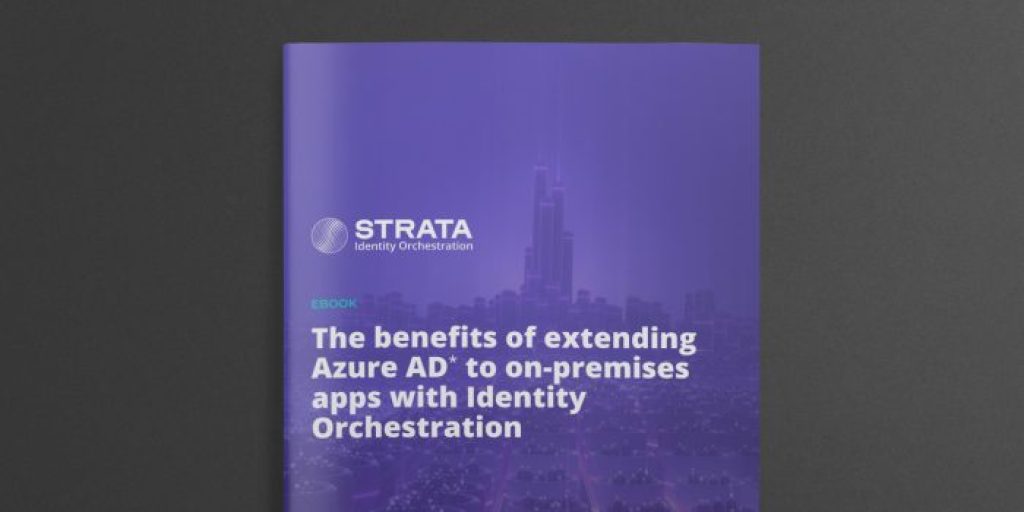The hidden costs of maintaining a legacy IDP
Why it’s time to move on from your outdated identity provider

The modern digital landscape is expanding and transforming at breakneck speed. As a result, the tools we rely on to secure and navigate this complex world of transformation are more critical than ever. One could argue that identity in the cloud is at its breaking point.
The Identity Provider (IDP) is the linchpin in the complex process of authentication. But what happens when this crucial component starts to show its age and struggles to keep up with the evolving demands of modern cybersecurity?
Moving to a modern cloud IDP is the answer, but many organizations stall because breaking up with a legacy IDP and mirating all their apps and data involves many moving parts and requires a hefty budget.
It might be tempting to do nothing. Many organizations choose to stick their head in the sand and keep patching and updating. They keep paying whatever on-prem IDP vendor, however much they demand to keep their legacy IDP going because it is critical to making everything else work. And so much work to change it.
Yet, there are many costs associated with a legacy IDP that go beyond the price tag. In this article, we’ll delve into the multifaceted world of IDPs and make a compelling case for why modernizing your IDP should be at the top of your priority list.
Benefits of legacy IDP migration
Legacy identity systems, reliable back in the day, are not equipped to handle modern, dynamic, and ever-evolving digital challenges. Especially in today’s remote and hybrid workplace, users are accessing resources from various devices, locations, and networks.
Modern IDPs are designed for the adaptability and flexibility required for the new normal of work — offering adaptive authentication, which considers factors like user behavior, device, and location to determine access. With this adaptability, security is boosted, and user experience improves.
Most importantly, the financial benefits of moving on from a legacy IDP are staggering. Direct costs such as renewal fees and support costs are just the tip of the iceberg. For instance, the time and resources devoted toward maintaining outdated systems could be invested in technical innovation, driving business growth.
Understanding the difference between old and new identity systems
Identity providers play a pivotal role in ensuring that online interactions are legitimate and secure. By validating identities, they prevent unauthorized access and potential breaches. So, what is the difference between old and new identity systems? The following analogy should help paint the picture:
Imagine your digital infrastructure as a sprawling, intricate garden. A legacy IDP is like an old, wooden fence that’s been around for years. Sure, it keeps out most intruders, but it’s starting to wear thin: wood is rotting, and some nails have come loose.
If a new type of pest appears, the old fence can’t do much to stop it. Plus, opening and closing that gate each time you need to let someone in is a hassle.
A modern IDP, however, is like a state-of-the-art electronic fence with motion sensors, cameras, and automated gates. It keeps intruders out and allows authorized personnel to enter effortlessly using a secure key card or even a mobile app. The fence can be easily updated to deal with new threats, like drones or advanced hacking tools. It can even integrate with other smart systems in the garden, like irrigation and lighting, to create a harmonious, secure environment.
Hidden costs of maintaining a legacy IDP
Legacy systems carry a financial burden many companies often don’t fully consider. Let’s look at some areas of persisting with an outdated IDP that often fall under the radar.
Tech-debt tax: When businesses continually invest in “band-aid” technology to keep the system running: servers, storage solutions, and connectivity infrastructure. Legacy systems, being non-intuitive, often require specialized skills. Training personnel or hiring experts adds to the financial strain.
Sneaky renewal costs: While renewal costs for your legacy IDP may seem low, the true expense comes with the infrastructure and maintenance needed to support it.
Infrastructure overhead: For every 10,000 users, companies need a cluster of servers, terminal servers, storage area networks, and more. Such resource-intensive infrastructure requires significant compute and processing power, as well as regular updates and patches (if available).
Personnel costs: As mentioned above, enterprise companies often need dedicated teams to manage their legacy IDP infrastructure. It’s common for an organization to have a team of five individuals, each earning an average of $125,000 annually, dedicated to managing their legacy IDP.
Vendor hardball: Many vendors play hardball during renewals, offering initial discounts but increasing prices significantly upon renewal, especially if the customer wants a shorter contract duration. They are selling a product that has outlived its usefulness to new buyers, so now they are getting what they can out of their locked-in user base.
Contract lock-in: Legacy contracts often have clauses that make it financially challenging for companies to switch vendors or even reduce their usage. It’s like being held hostage. In one example, the contract might stipulate that if a company doesn’t renew at a predetermined price, it might be charged retroactively at a higher rate for previous years.
Challenges with migration: Companies looking to migrate away from legacy IDPs face challenges due to the deep integration of these systems into their infrastructure. Since legacy IDPs are so customized, you have to hire a third-party systems integrator to manage the multi-year project.
Database costs: Legacy IDPs require legacy databases. Databases like Oracle and IBM DB2 often take up a significant portion of the spend for companies. It may not fall under the identity budget, but it must be factored into the total cost of ownership.
Security risks associated with relying on legacy systems
Sticking with outdated security protocols in this threat landscape is like using a flip phone in the age of smartphones — you might be able to make calls, but you’re missing out on crucial features that keep you safe and connected.
As corporate owners shift their focus to newer products, support for legacy systems declines — meaning fewer security patches and updates, leaving the system vulnerable.
More importantly, legacy systems often have well-documented vulnerabilities. Cybercriminals, aware of these weak points, can easily exploit them and cause a data breach. The impact of a security breach is more than financial; reputational damages can have long-lasting implications.
Leave your legacy IDP behind and modernize for good
Having a modern identity and access management (IAM) isn’t a luxury; it’s a necessity. Outdated, monolithic IDPs — with their hidden costs and security vulnerabilities — are a risk and a sunk cost, while modern, cloud-based IDPs offer advanced features and superior security as well as significant cost savings.
If you’re still on the identity treadmill, the time to get off is now and take your IDP to the next level. Migrating to the cloud and modernizing your IAM creates agility, flexibility, security, and slims down your operational budget to allow for investment in innovation rather than paying a tech-debt tax.
If you’re looking for a friendly way to get started, check out our Orchestration Kitchen, a free set of workshops with each episode tackling a different identity challenge; we’ll show you exactly how to solve it with Identity Orchestration. Sign up for individual workshops or join us for the complete series, and you’ll be one step ahead in modernizing your IDP and moving away from your legacy IDP for good.
Modernize any app with any IDP in minutes. Join the 'Orchestration Kitchen' workshops.






